
The goal of book restoration and conservation is to restore a book’s function and appearance. A book must be able to be opened and the pages turned without causing damage. Water, soot, mold, poor quality materials, and mishandling all contribute to the deterioration of a volume. The first step in conserving a book starts with an evaluation of the strength and quality of the materials. Tears, missing, or loose pages are identified and mended. Very often, leather and cloth bindings can be repaired, retaining the original covers and spine. When a binding is missing or damaged beyond repair, a new binding in the style of the original can be made. A successful conservation treatment allows the book to be used while retaining as much of the original materials and appearance as possible.
Book Restoration | Conservation Examples
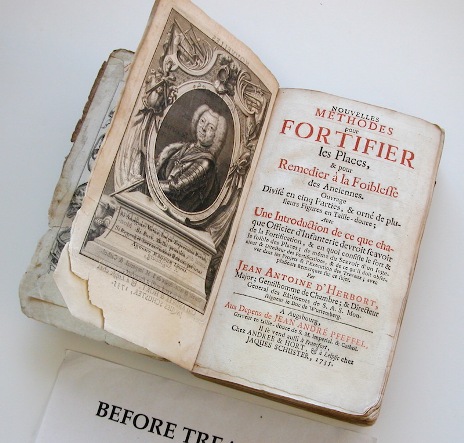
“Nouvelles Methodes pour Fortifier” before treatment
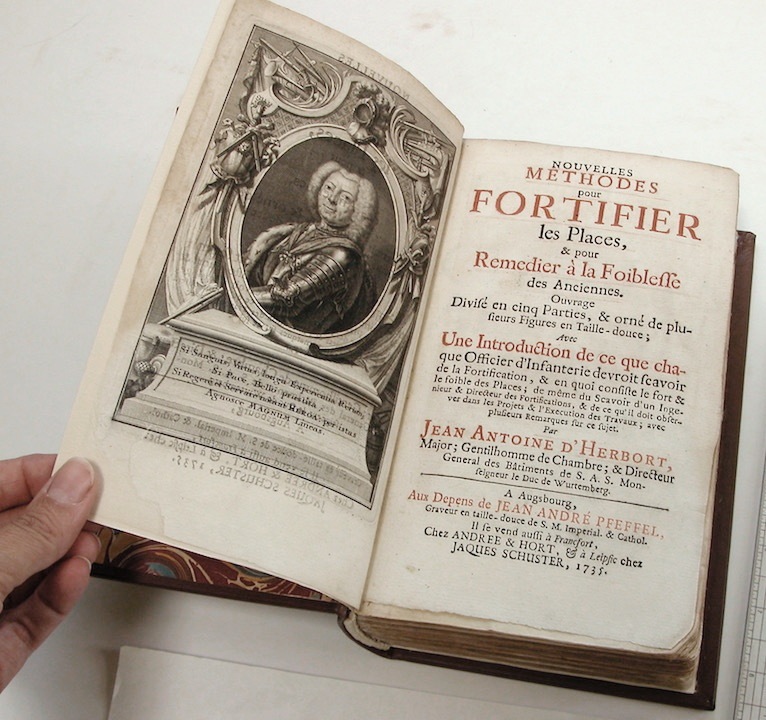
“Nouvlles Methodes pour Fortifier” after treatment
Nouvelles Methodes pour Fortifier, 1735
Rebinding Example
“Nouvelles Methodes pour Fortifier”, printed in 1735, was still bound in it’s original uncovered boards. These binding were meant to be temporary, the buyer would have bought the book from the publisher and taken it to a binder. This temporary binding had too much water and mold damage to retain. The book was dis-bound, and the first few pages along with the bookplate washed and de-acidified. The book was then resewn and rebound in full calf with handmade marbled endsheets. The bookplate was mended and placed on the inner cover.
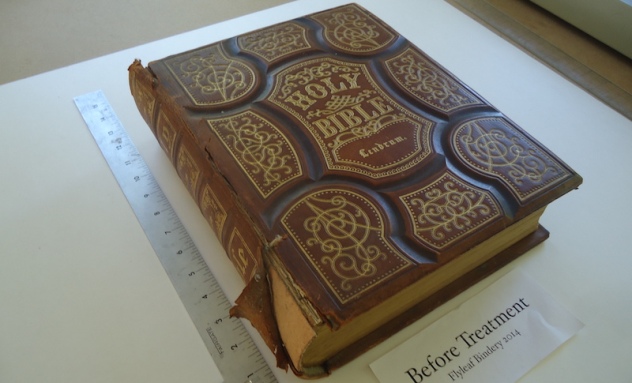
Family Bible before treatment
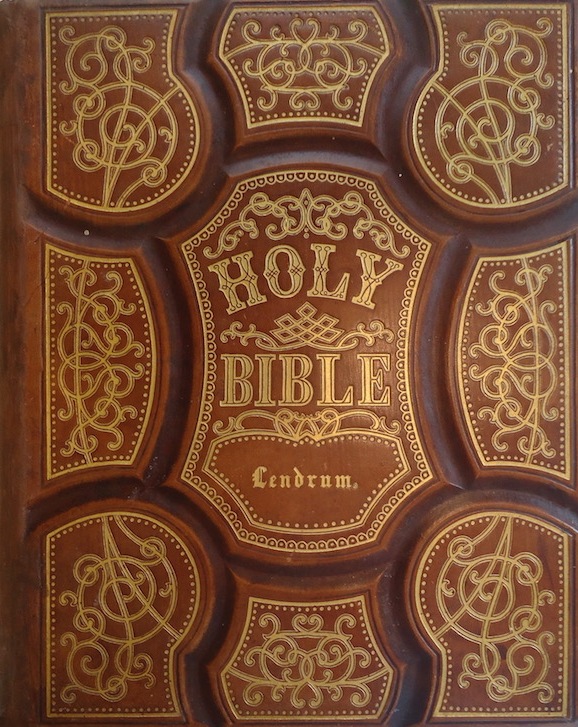
Family Bible after treatment
Family Bible, 1872
The Lendrum family Bible from 1872 had very typical damage of a Bible of that size and date. The leather spine and corners were reinforced and repaired with cloth and paper, then toned to match the leather.
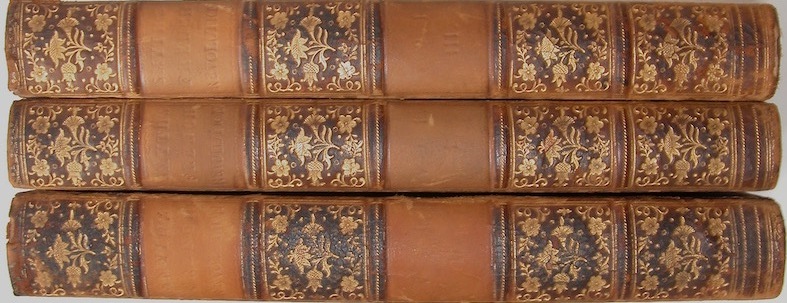
Before treatment
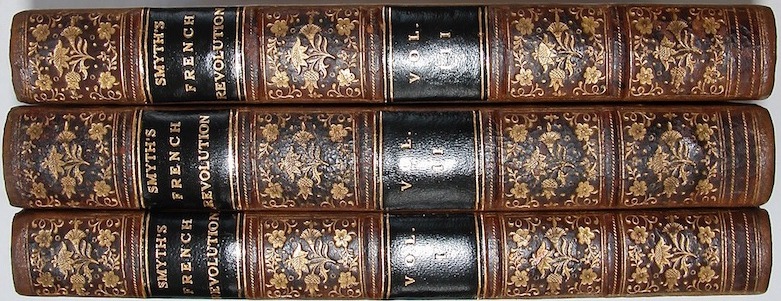
After treatment
French Revolution, three volumes, 1842
Spine labels example
This set of three volumes on the French Revolution was printed in 1842. The leather was beginning to show wear and all the title labels were missing. The leather was repaired at the head and tail and new labels were made in keeping with how the originals would have looked.
Back to our Fine Art Restoration, Repair and Conservation Services page | Direction to our Studio LINK
Contact Oliver Brothers or call us to schedule an appointment at 617-536-2323
"*" indicates required fields